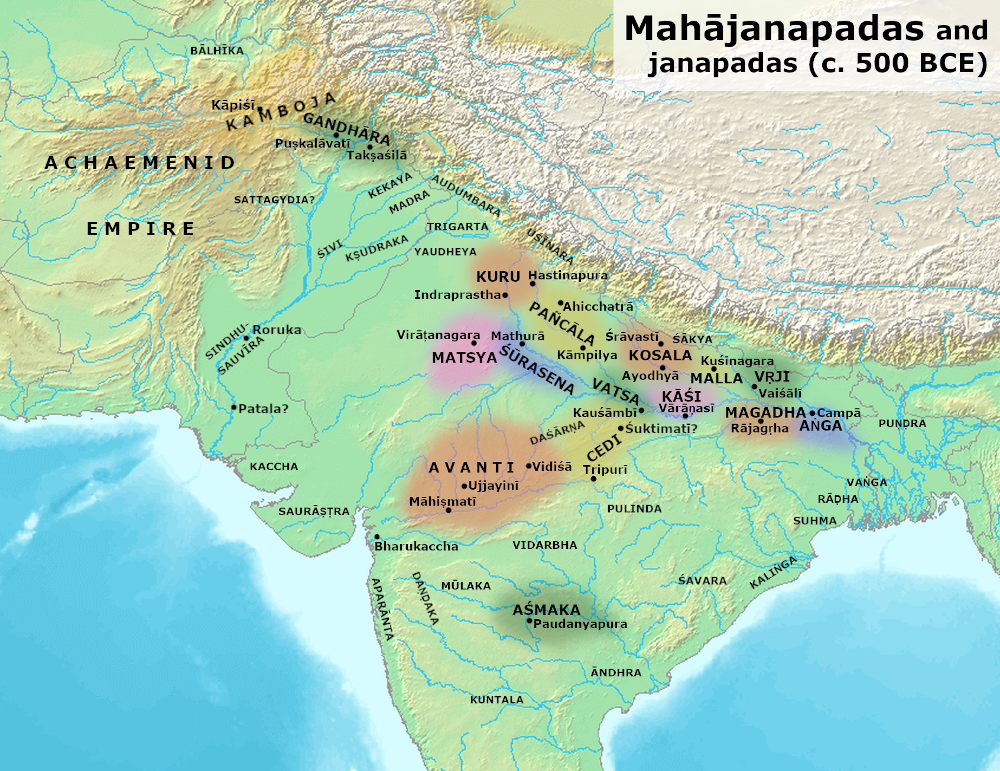Pulinda on:
[Wikipedia]
[Google]
[Amazon]
 Pulinda (
Pulinda (
 Pulinda (
Pulinda (Sanskrit
Sanskrit (; attributively , ; nominally , , ) is a classical language belonging to the Indo-Aryan branch of the Indo-European languages. It arose in South Asia after its predecessor languages had diffused there from the northwest in the late ...
: ) was an ancient tribe
The term tribe is used in many different contexts to refer to a category of human social group. The predominant worldwide usage of the term in English language, English is in the discipline of anthropology. This definition is contested, in p ...
of south-central South Asia
South Asia is the southern subregion of Asia, which is defined in both geographical and ethno-cultural terms. The region consists of the countries of Afghanistan, Bangladesh, Bhutan, India, Maldives, Nepal, Pakistan, and Sri Lanka.;;;;;;;; ...
whose existence is attested during the Iron Age
The Iron Age is the final epoch of the three-age division of the prehistory and protohistory of humanity. It was preceded by the Stone Age (Paleolithic, Mesolithic, Neolithic) and the Bronze Age (Chalcolithic). The concept has been mostly appl ...
. The Pulindas were a non- Indo-Aryan tribe.
Location
During the later Vedic period, the Pulindas were living to the south-east of theDaśārṇa
Daśārṇa (Sanskrit: ) was an ancient tribe of south-central South Asia whose existence is attested during the Iron Age.
Location
The Daśārṇas lived on the Dasān river. Their neighbours to the south-east were the Pulinda
Pulinda (S ...
s.
Though clearly associated with the Vindhyan region, the Pulindas are sometimes believed to have had multiple tribal branches that ranged up to the Himalayan region
The Himalayas, or Himalaya (; ; ), is a mountain range in Asia, separating the plains of the Indian subcontinent from the Tibetan Plateau. The range has some of the planet's highest peaks, including the very highest, Mount Everest. Over 100 ...
and Assam
Assam (; ) is a state in northeastern India, south of the eastern Himalayas along the Brahmaputra and Barak River valleys. Assam covers an area of . The state is bordered by Bhutan and Arunachal Pradesh to the north; Nagaland and Manipur ...
. In the Himalayan region, ancient Indian literature often mentions them in conjunction with the Kiratas
The Kirāta ( sa, किरात) is a generic term in Sanskrit literature for people who had territory in the mountains, particularly in the Himalayas and Northeast India and who are believed to have been Sino-Tibetan in origin. The meaning o ...
.
History
The Rock Edicts of Ashoka (269 BCE - 231 BCE) mention the Pulindas, their capital Pulinda-nagara, and their neighboring tribes, based on which their capital is sometimes located in present-dayJabalpur District
Jabalpur district is a district of Madhya Pradesh state in central India. The city of Jabalpur is the administrative headquarters of the district.
The area of the district is 5,198 km² with population of 2,463,289 (2011 census). As of 201 ...
of Madhya Pradesh
Madhya Pradesh (, ; meaning 'central province') is a state in central India. Its capital is Bhopal, and the largest city is Indore, with Jabalpur, Ujjain, Gwalior, Sagar, and Rewa being the other major cities. Madhya Pradesh is the seco ...
state. Basak identifies them with the hill tribe
Hill people, also referred to as mountain people, is a general term for people who live in the hills and mountains.
This includes all rugged land above and all land (including plateaus) above elevation.
The climate is generally harsh, with s ...
s of the Vindhya and Satpura ranges, more specifically the Bhils.Radhagovinda Basak, AŚOKAN INSCRIPTIONS, Calcutta, 1959, pp. 75
References
Sources
*External links
Ancient peoples of India {{India-hist-stub